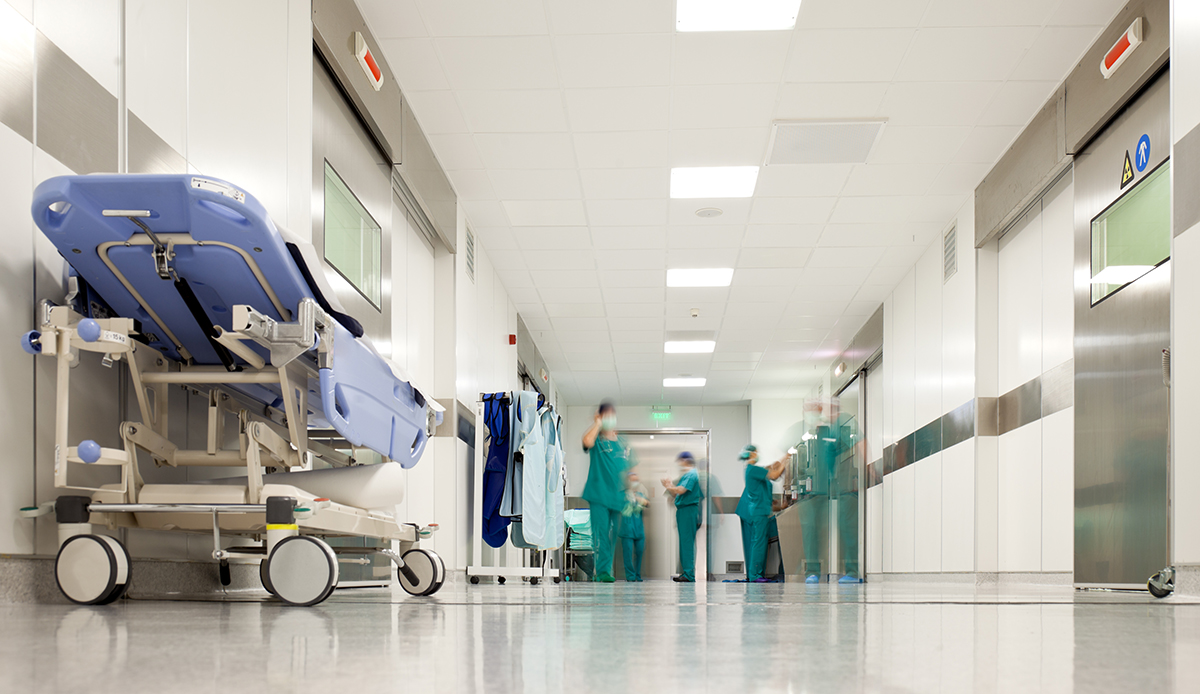
Ensuring surfaces have been properly cleaned has become crucial in healthcare settings.
Several clinical studies demonstrate the value of going beyond visual inspection and adopting an objective and quantifiable cleaning monitoring method as a critical component of a robust environmental hygiene infection prevention program.1
Monitoring methods are used to verify the adequacy of cleaning and to monitor compliance of environmental services (EVS) staff with cleaning protocols. Adenosine triphosphate, or ATP, monitoring is a commonly used method.2-8 Find more information on specifically monitoring endoscopes with ATP in this blog post.
In addition, here are three other benefits of a cleaning monitoring program:
1. Allows you to analyze ongoing objective, quantitative measures on the adequacy of your cleaning program.
This information can help you track and analyze trends, providing a baseline for comparison, and enable your facility to track and achieve new cleaning goals.
2. Visual inspection is not a standalone option for assessing the cleanliness of critical surfaces.
ATP is present in organic material. Using a system to detect the presence of ATP remaining on critical surfaces after cleaning is a measure of appropriate cleaning processes. Therefore, quantitative data from ATP monitoring is essential for quality improvement and risk management programs. 9
3. A cleaning monitoring program can help provide indicators of compliance.
Are cleaning tasks being completed according to established protocols? Are there breaches in the cleaning processes? Does the team need further training? The data provided by ATP monitoring can help you answer these questions.
These are only a few reasons why a cleaning monitoring program can be an essential component to implementing a successful facility cleaning program. Click here to learn more about 3M’s ATP monitoring solutions.
References:
1 Cleaning Hospital Room Surfaces to Prevent Health Care–Associated Infections: A Technical Brief; Jennifer H. Han, MD, MSCE *; Nancy Sullivan, BA *; Brian F. Leas, MS, MA *; David A. Pegues, MD; Janice L. Kaczmarek, MS; Craig A. Umscheid, MD, MSCE; Ann Intern Med. 2015;163(8):598-607.
2 Snyder GM, Holyoak AD, Leary KE, Sullivan BF, Davis RB, Wright SB. Effectiveness of visual inspection compared with non-microbiologic methods to determine the thoroughness of post-discharge cleaning; Antimicrob Resist Infect Control 2013 2(1):26.
3 Mulvey, D. et al., Finding a benchmark for monitoring hospital cleanliness; Journal of Hospital Infection, 2011 77(1):25-30.
4 Luick L, Thompson PA, Loock MH, Vetter SL, Cook J, Guerrero DM. Diagnostic assessment of different environmental cleaning monitoring methods; Am J Infect Control. 2013 41(8):751-2.
5 Smith PW, Gibbs S, Sayles H, Hewlett A, Rupp ME, Iwen PC. Observations on hospital room contamination testing; Healthc Infect 2013 18:10-3.
6 Malik RE, Cooper RA, Griffith CJ. Use of audit tools to evaluate the efficacy of cleaning systems in hospitals; Am J Infect Control 2003 31:181-7.
7 Branch-Elliman W, Robillard E, McCarthy G Jr, Gupta K. Direct feedback with the ATP luminometer as a process improvement tool for terminal cleaning of patient rooms; Am J Infect Control 2014 42:195-7.
8 Smith PW, Beam E, Sayles H, Rupp ME, Cavalieri RJ, Gibbs S, et al. Impact of adenosine triphosphate detection and feedback on hospital room cleaning; Infect Control Hosp Epidemiol 2014 35:564-9.
9 Sitzlar, B, Deshpande, A, Fertelli, D, et al. An environmental disinfection odyssey: Evaluation of sequential interventions to improve disinfection of Clostridium difficile isolation rooms. Infect Control Hosp Epidemiol 2013;34(5):459-465.
